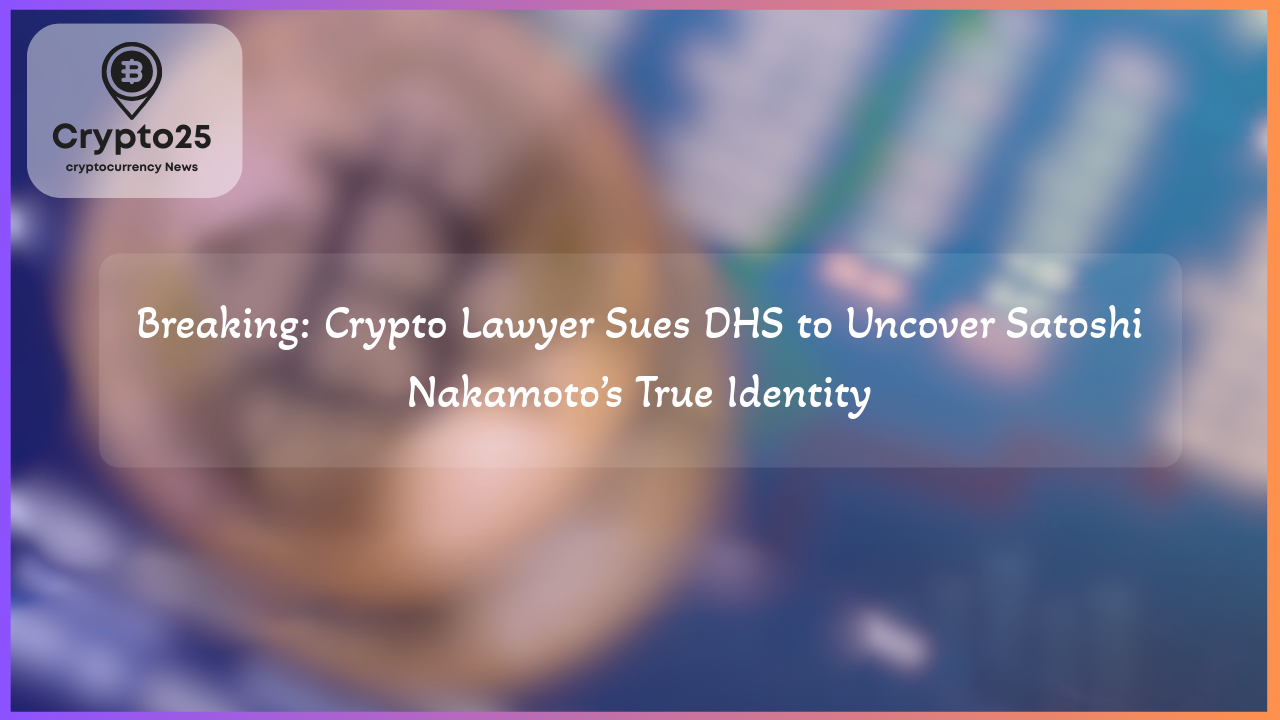
For years, the identity of Bitcoin’s enigmatic creator, known only by the pseudonym Satoshi Nakamoto, has remained one of the greatest mysteries in modern technology. This intrigue has sparked global speculation, legal debates, and multiple investigations, the latest being a lawsuit filed by crypto attorney James A. Murphy against the U.S. Department of Homeland Security (DHS). Could the federal government hold the key to unmasking Nakamoto?
Lawsuit Against DHS to Reveal Satoshi Nakamoto’s Identity
James A. Murphy, a respected attorney and prominent figure in crypto legal discussions, has filed a lawsuit against the DHS to force transparency regarding Satoshi Nakamoto’s identity. Murphy’s legal action follows his unsuccessful February 12 Freedom of Information Act (FOIA) request to the agency, which he argues was unlawfully ignored. Through this lawsuit, filed in the U.S. District Court for the District of Columbia, Murphy seeks classified documents linked to a specific 2019 DHS interview.
The heart of the matter lies in claims made by DHS Special Agent Rana Saoud during that interview. Allegedly, Saoud stated that she not only knows Nakamoto’s identity but also met with four individuals supposedly involved in Bitcoin’s creation. With Bitcoin reaching unprecedented levels of global adoption and institutional investment, Murphy contends that the public deserves insight into what the government knows about Bitcoin’s origins and its pseudonymous creator.
Why Satoshi Nakamoto’s Identity Still Matters
Understanding Satoshi Nakamoto’s identity goes beyond satisfying curiosity—it has significant implications for the global financial ecosystem. Bitcoin, with a market capitalization exceeding $1.2 trillion, has transformed from a niche experiment into a major financial asset, attracting both public and private investment. Institutions such as BlackRock and Fidelity have filed for Bitcoin exchange-traded funds (ETFs), while governments, including the U.S., are exploring strategic reserves of Bitcoin.
The mystery surrounding the pseudonymous figure raises several critical concerns. For instance, should the person (or group) controlling Bitcoin’s earliest holdings, often referred to as "Satoshi’s wallets," decide to liquidate the coins, it could significantly destabilize the cryptocurrency markets. Historical on-chain data suggests Nakamoto mined over 1 million BTC, valued at upwards of $27 billion. A foundational understanding of this figure’s identity could offer insight into potential risks for global Bitcoin investors and policymakers alike.
| Title | Details |
|---|---|
| Market Cap | $1.2 Trillion |
| First BTC Transaction | Sent to Hal Finney |
| Unspent Satoshi Holdings | 1 Million BTC |
Murphy’s determination to reveal this information underscores the critical need for transparency in an increasingly digital financial landscape. He argues that understanding Nakamoto’s identity is key to fostering trust and credibility within the crypto ecosystem while addressing potential vulnerabilities.
Ongoing Speculation About Nakamoto’s Real Identity
Over the years, countless theories about Satoshi Nakamoto’s identity have emerged. Dorian Nakamoto, a Japanese-American engineer, was notably misidentified as Bitcoin’s creator by Newsweek in 2014, largely due to his background and shared surname. Cryptographer Hal Finney, widely respected within the Bitcoin community, was another prime candidate owing to his role as the recipient of the first-ever BTC transaction and proximity to early Bitcoin development.
Famous figures like Adam Back (creator of the Hashcash protocol) and Wei Dai (developer of b-money, an inspiration for Bitcoin) have also found themselves at the center of speculation, though both have denied involvement. Paul Le Roux, a convicted programmer and alleged cartel leader, has been theorized to be Nakamoto due to circumstantial connections to early Bitcoin activities.
More recently, Canadian cryptographer Peter Todd was highlighted in the HBO documentary “Money Electric: The Bitcoin Mystery” as a potential candidate. However, Todd categorically dismissed these allegations, describing them as baseless and reflective of the speculative, often conspiratorial, narratives surrounding Nakamoto’s identity.
The Future of the Nakamoto Mystery
As the debate intensifies, Murphy’s lawsuit could bring us closer to uncovering the truth about Satoshi Nakamoto. Whether this legal battle succeeds or not, one thing is certain: the global crypto community remains captivated by the mystery surrounding Bitcoin’s origins. The implications of revealing the face—or faces—behind this revolutionary invention could shape the future of blockchain and digital finance for generations to come.
Understanding who Nakamoto truly is remains essential not just for scholarly debate but also for the ongoing evolution of the cryptocurrency sector. Will the DHS hold the missing puzzle piece? Or will Nakamoto’s identity forever remain a well-guarded secret? Only time and persistent legal efforts will tell.
